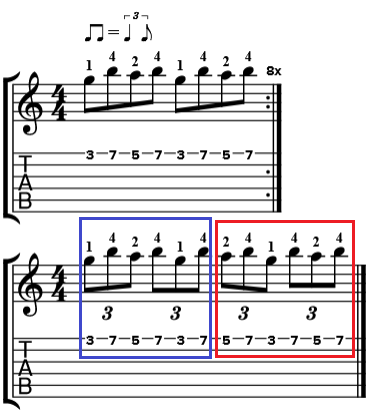This thread has really grown legs. I’m delighted with the course of the discussion so far.
Agreed. It strikes me that this is pretty much a rough guide to my fingering preferences, (1 3) as far as possible for for 2 note per string pentatonic lines, and (1 2 4) as far as possible for 3 note per string lines.
@ASTN, I agree. The lateral stretches I can get between my fingers is actually quite wide (as in, a wide angle), but stretching on the guitar is mostly about aligning the hand to take advantage of the frontal stretch.


 than when you make it with your other hand? Does it create a pain down the pinky side of your hand when you do
than when you make it with your other hand? Does it create a pain down the pinky side of your hand when you do 